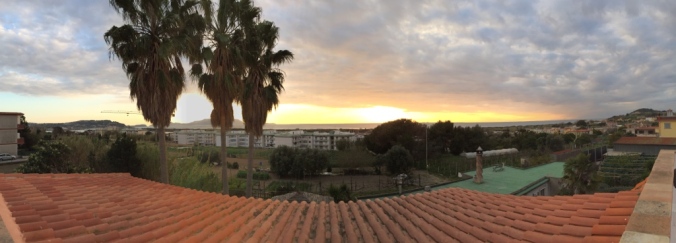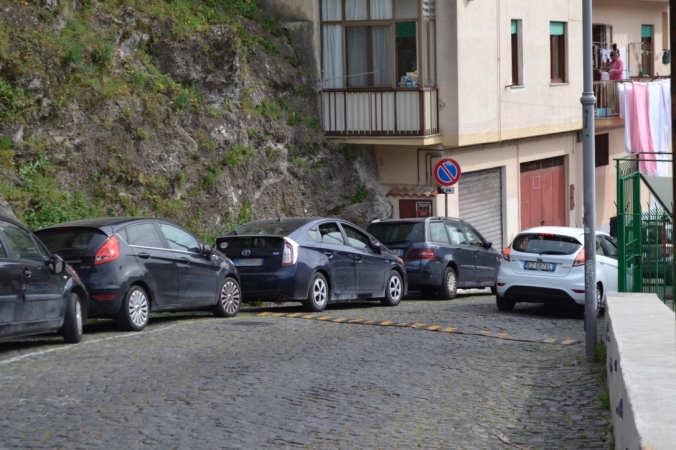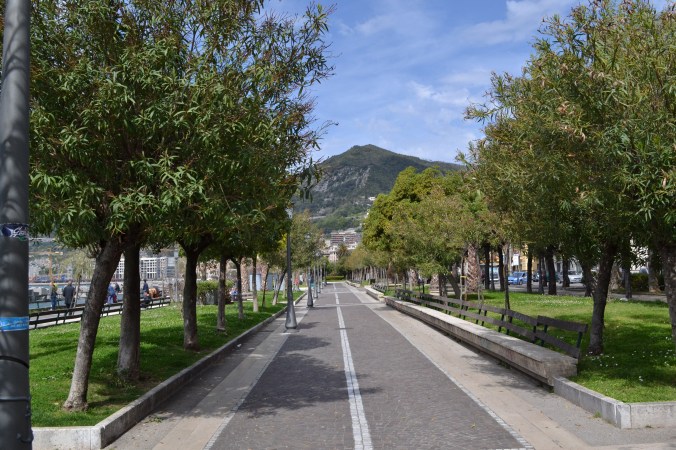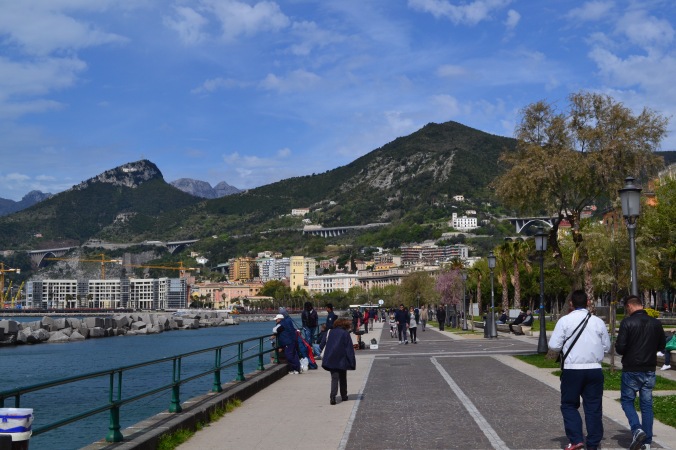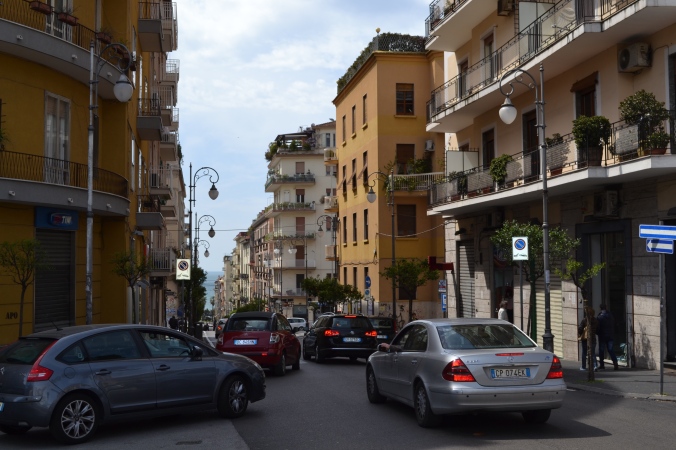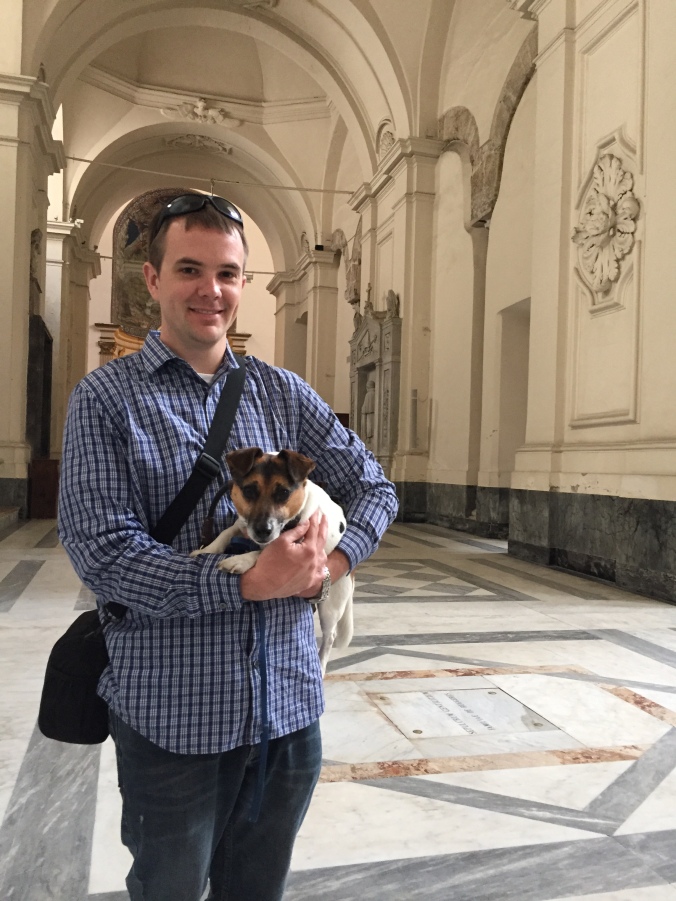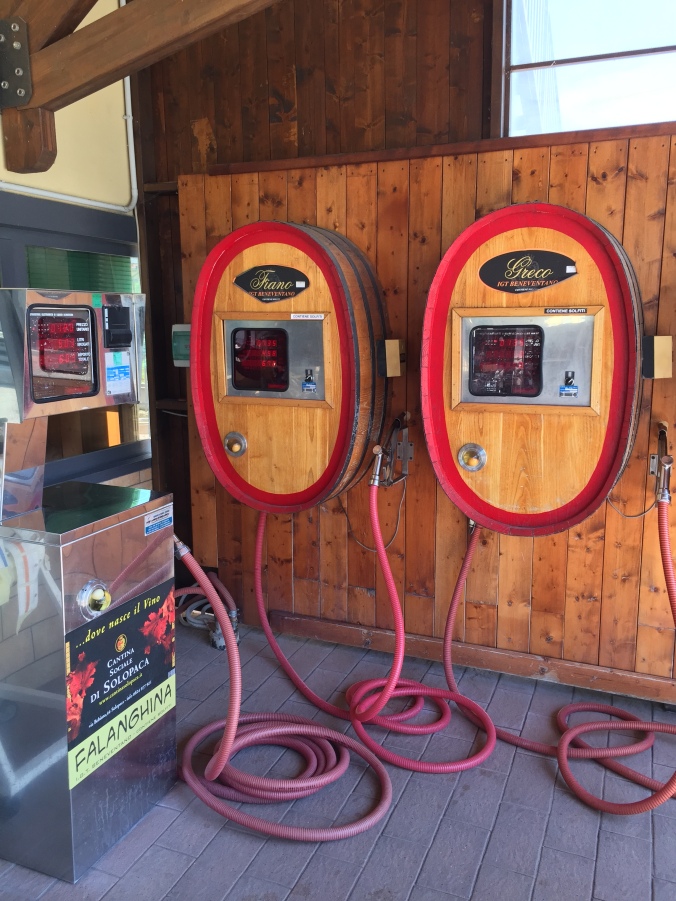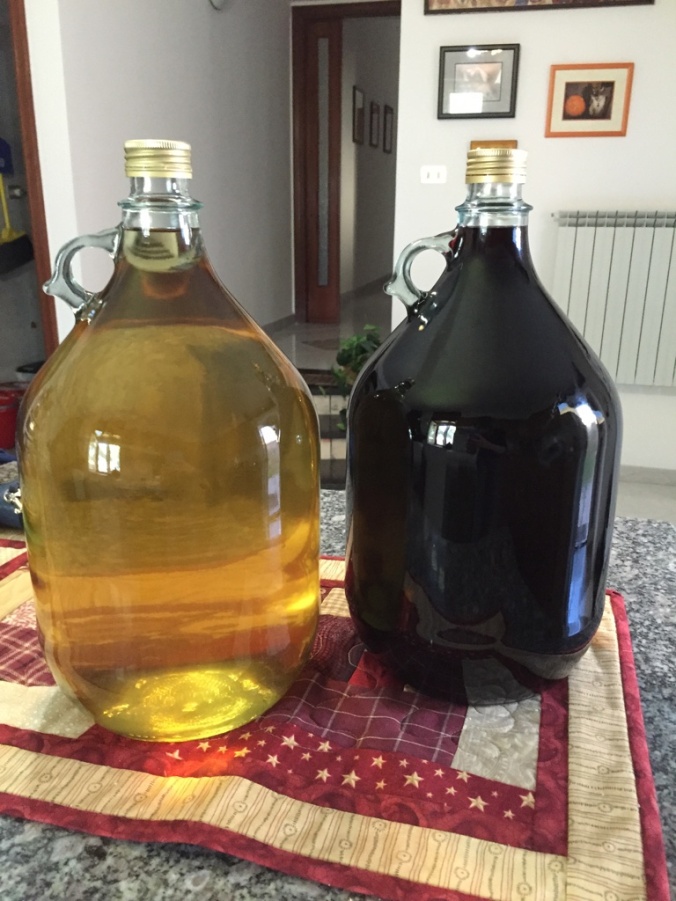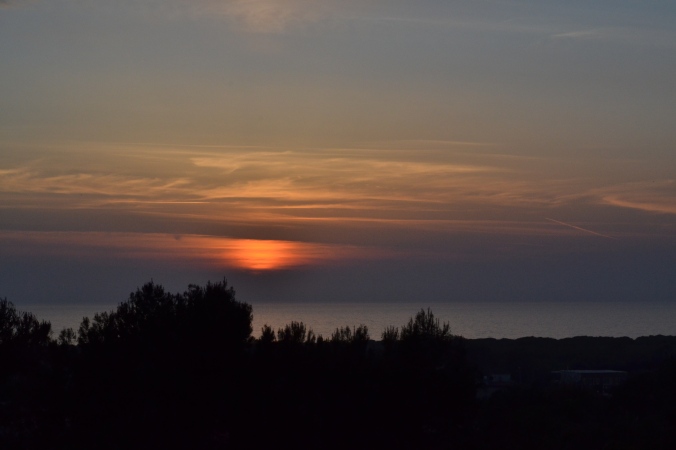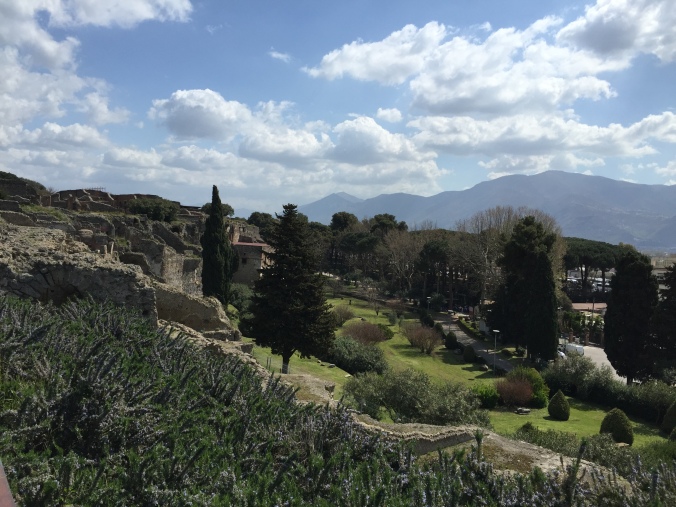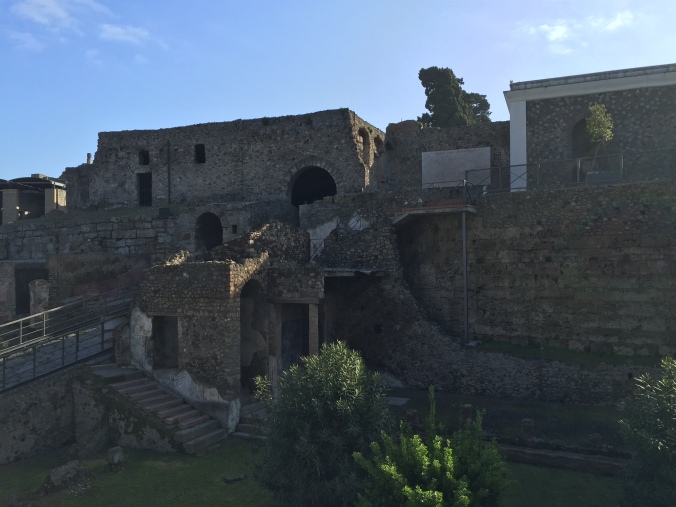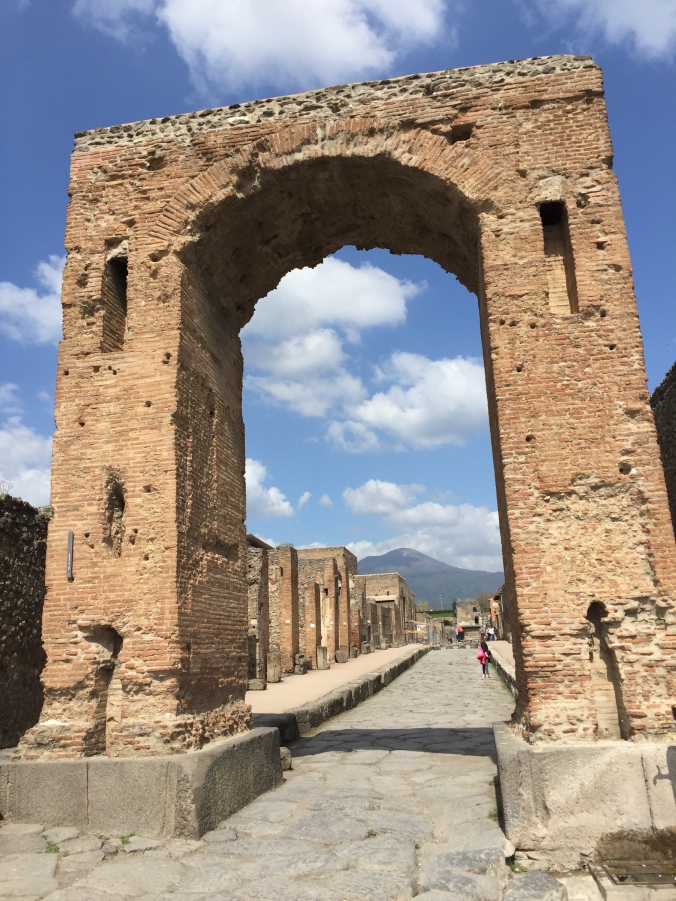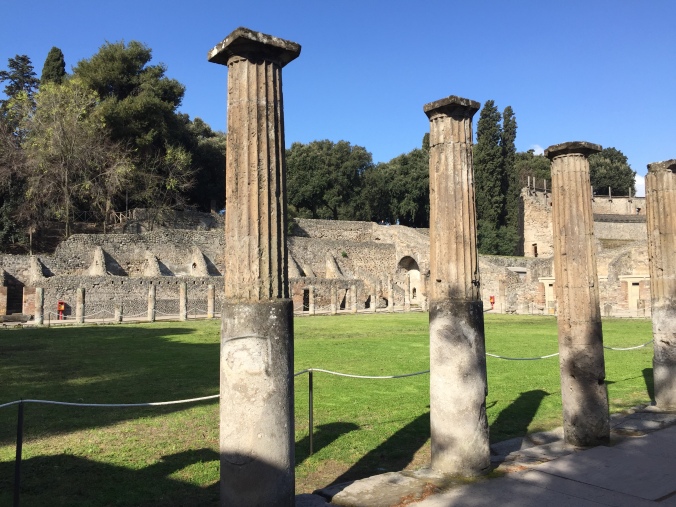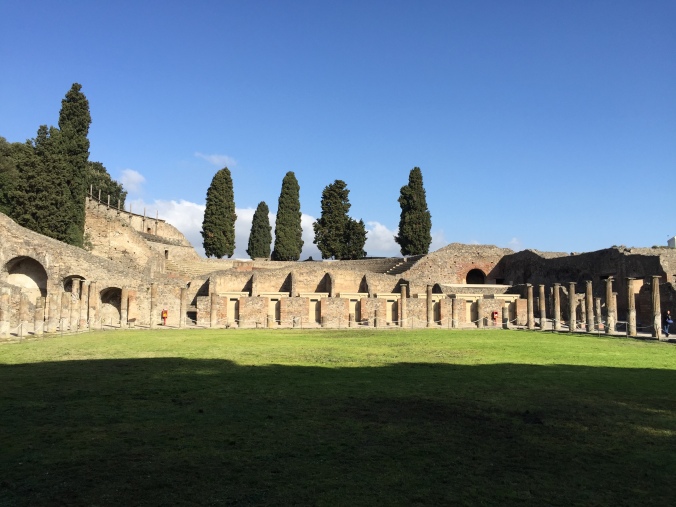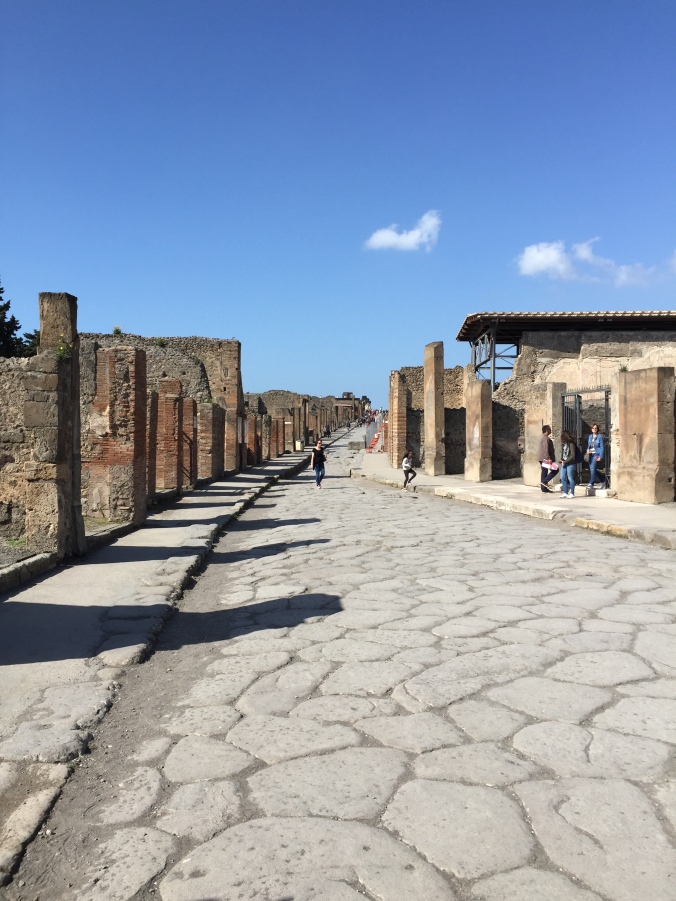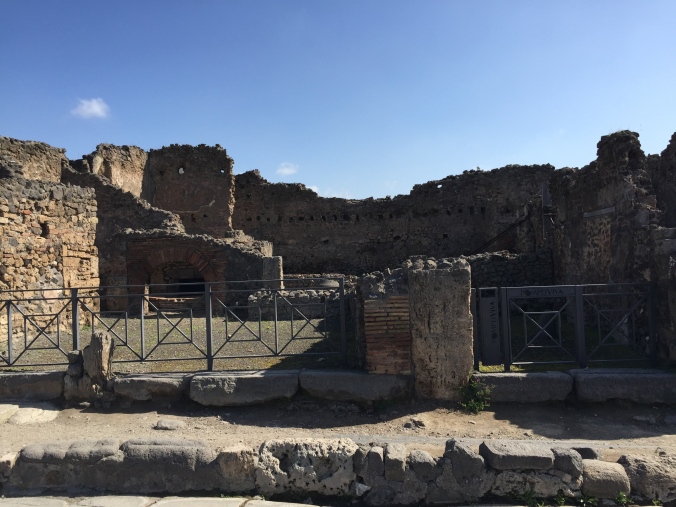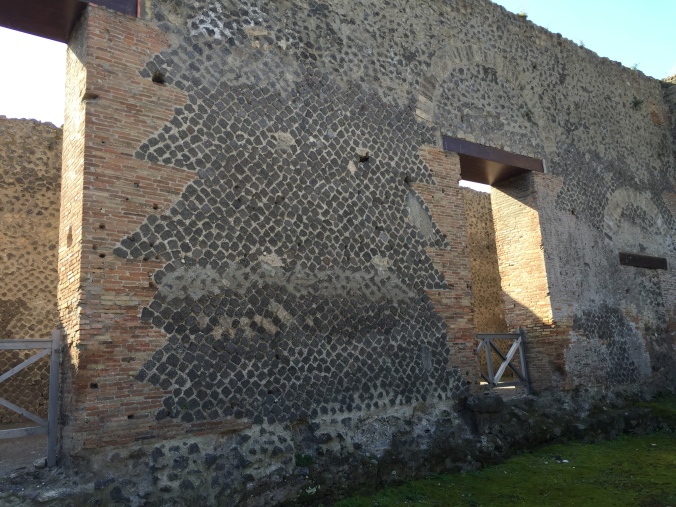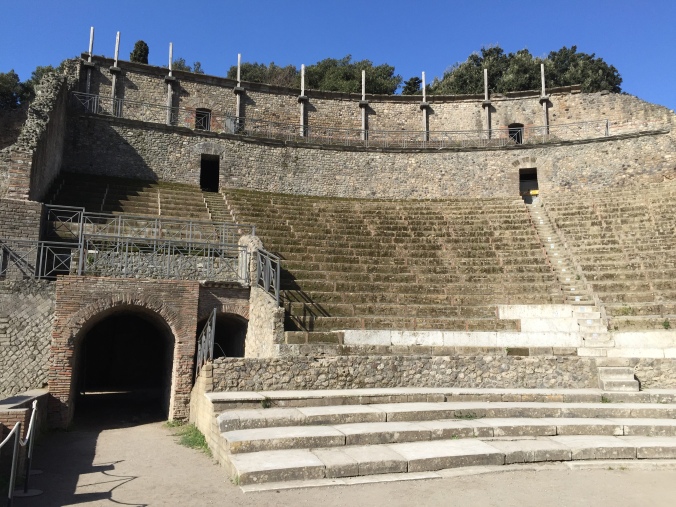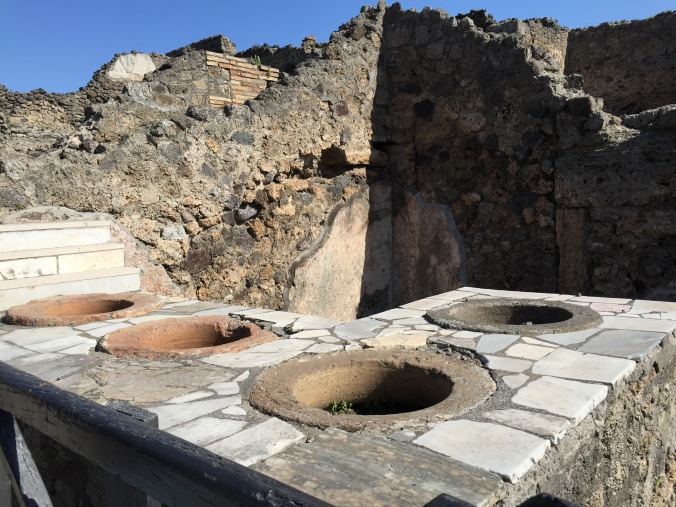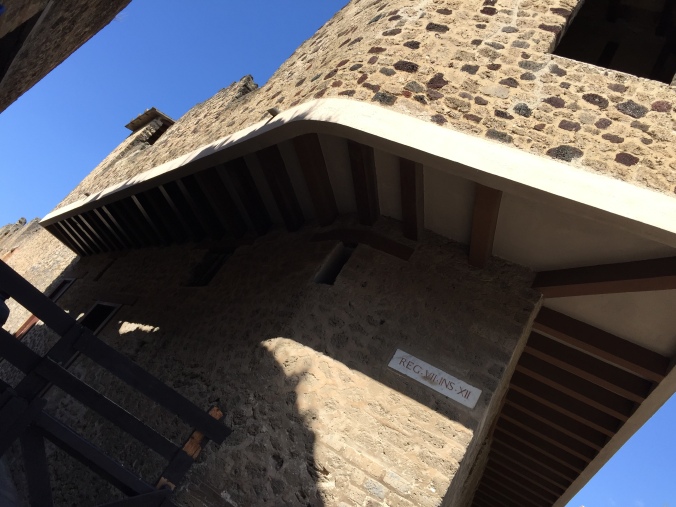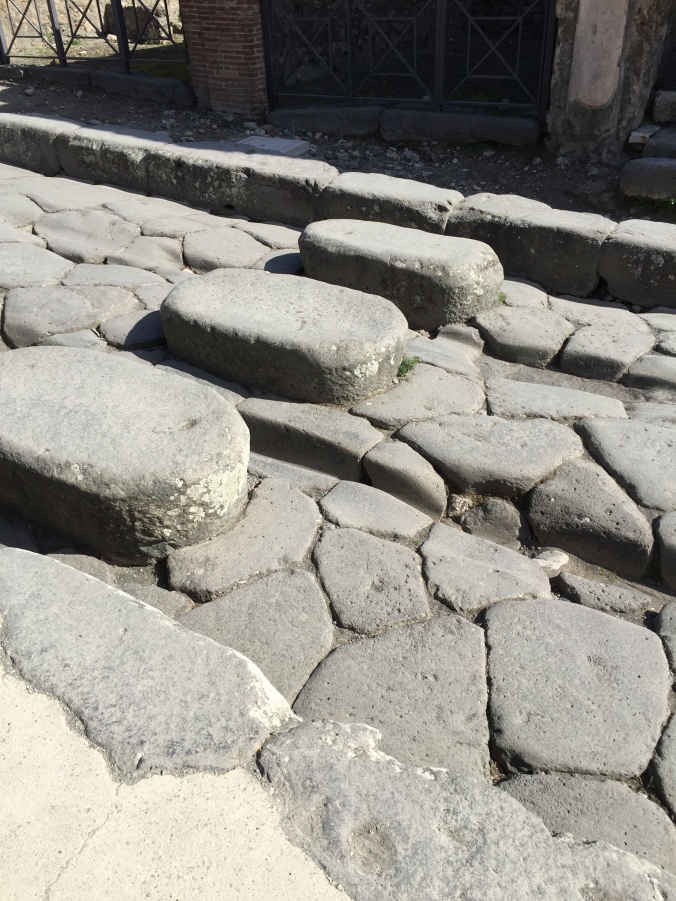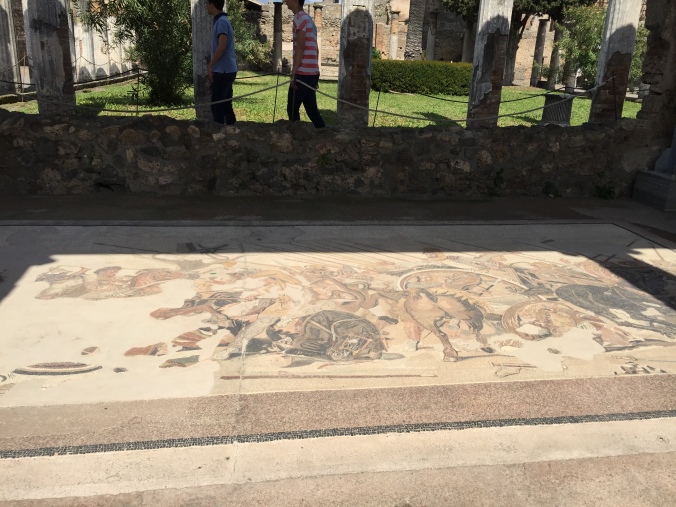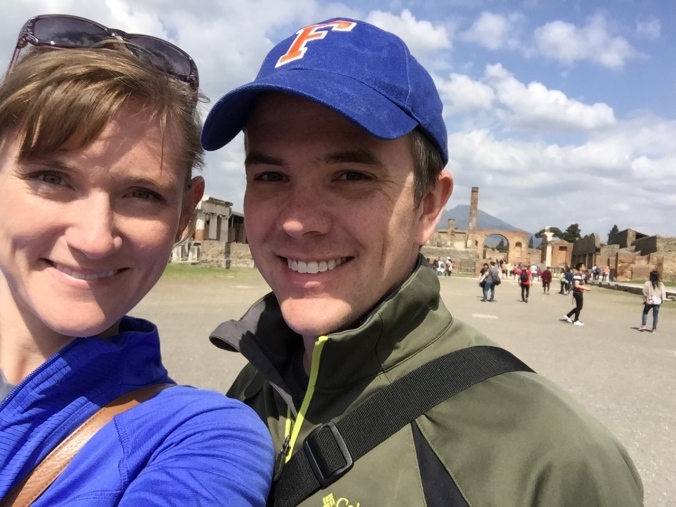Homesickness has begun setting in these past few weeks. In an attempt to ward off la nostalgia degli Stati Uniti, we’ve been doing our best to get out and travel as much as possible. And even though we’ve kept mainly to day trips, it’s been helpful in reminding us of how beautiful this country is and how rich the culture is that we have the opportunity to experience every single day.
Our rooftop view
Last weekend, David and I headed out for our first Neapolitan adventure, sans guidance from the experts (a.k.a. people who have been stationed here more than 6 months). We were headed to the town of Salerno, about an hour east of Naples off the Amalfi Coast.
Proof of parallel parking!
I should mention that when you live in a foreign country, everything is an ordeal. From the language barrier to the different styles of driving to the crazy (and I mean crazy!) roads, even the smallest, most mundane tasks you take for granted in the States are exhausting. Going to the grocery store, filling your car with gas, parking (that one might be more of a Neapolitan joy), eating at a restaurant… the list goes on.
So that gives you some perspective on how we felt getting into our car and heading to Salerno. Our goal was to make it there and back in one piece. We were absolutely fine with whatever happened in between (but really hoped that would not include our car getting broken into).
Our efforts were greatly rewarded when we pulled into town and saw the beautiful waterfront path and quaint cobblestone streets, complete with your quintessential Italian cafes and street vendors.
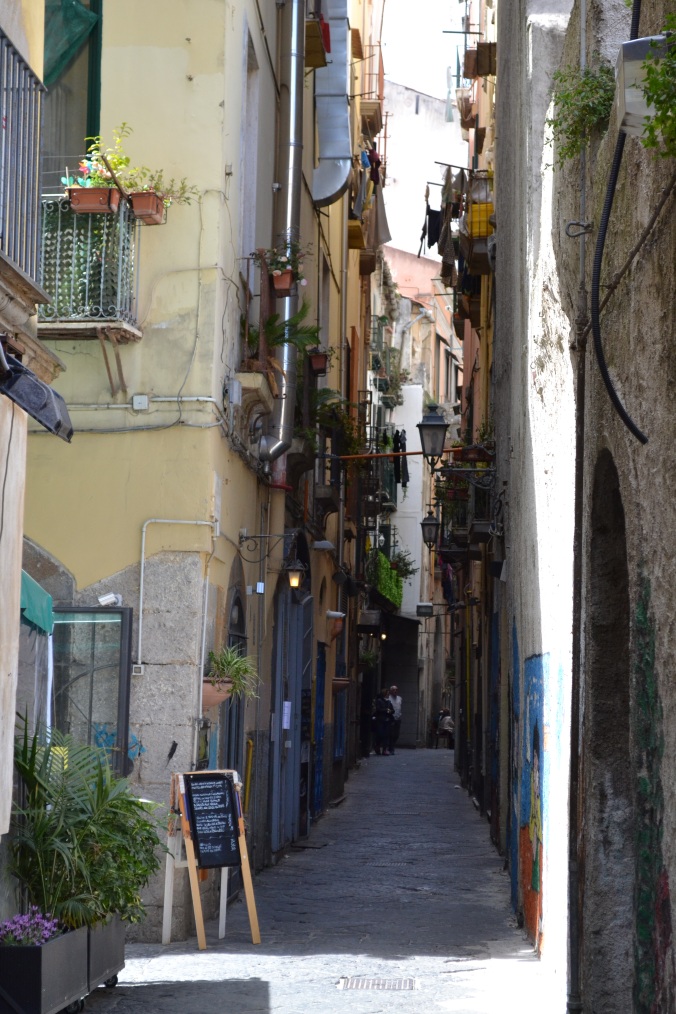
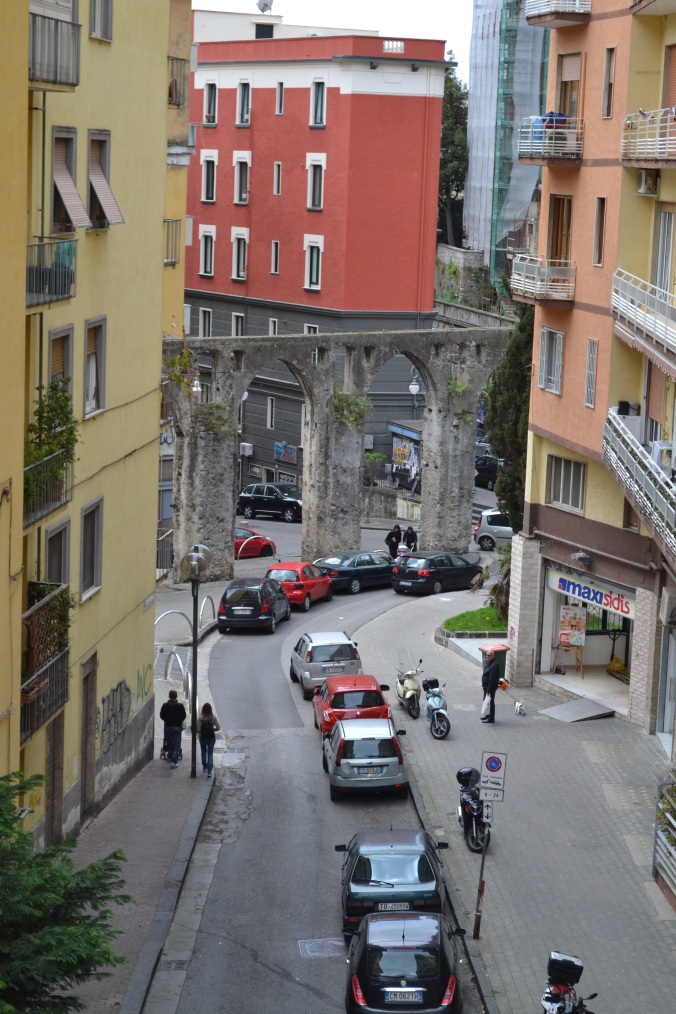
An ancient aqueduct runs through the town—how cool is that?!
We wandered the town with nothing more in hand than Google Maps, poking into stores and shops here and there. We happened along an open-air market where small business owners were selling meats, cheese, produce, honey, and a plethora of other tasty goods local to the Campania area.
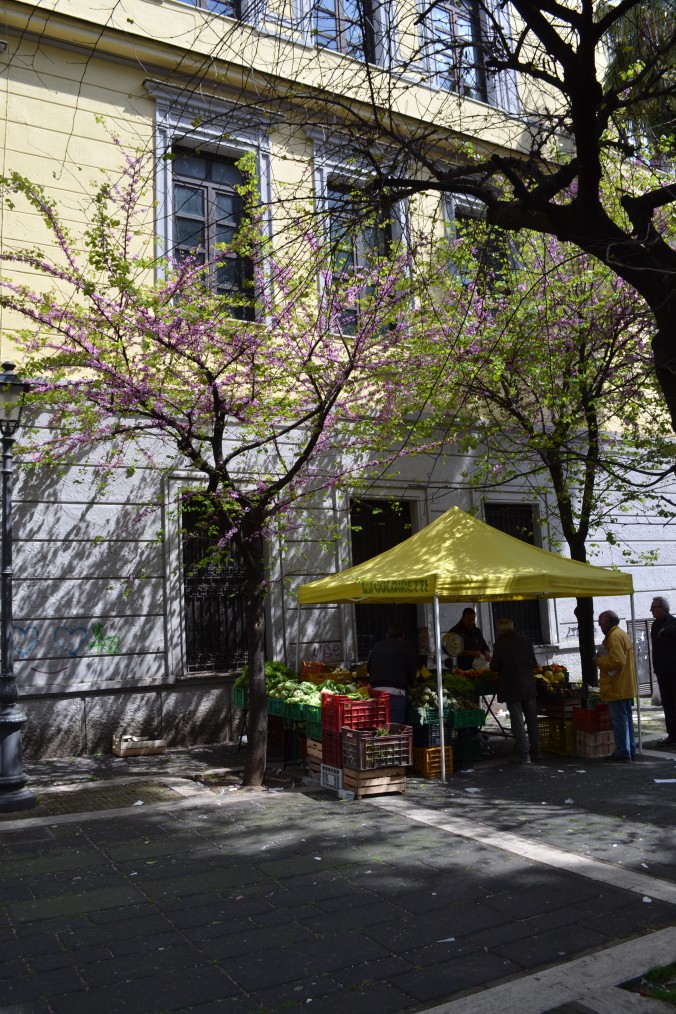
I also had a lovely conversation with an Italian man, who first thought I was a student, and then thought I was a teacher, and then just gave up on trying to figure out what I was doing here. I can’t be sure exactly what was said because it was a mixture of broken Italian and French (he didn’t speak any English but we both knew a little French), but he was very kind.
You can see the street slopes downward into the ocean.
We also had a handful of Italians ogle over the Twin Terrors. We heard lots of “piccolini” and “molto tranquille, brava!” and had to explain with our broken Italian that Max was in fact blind and not just sleeping.
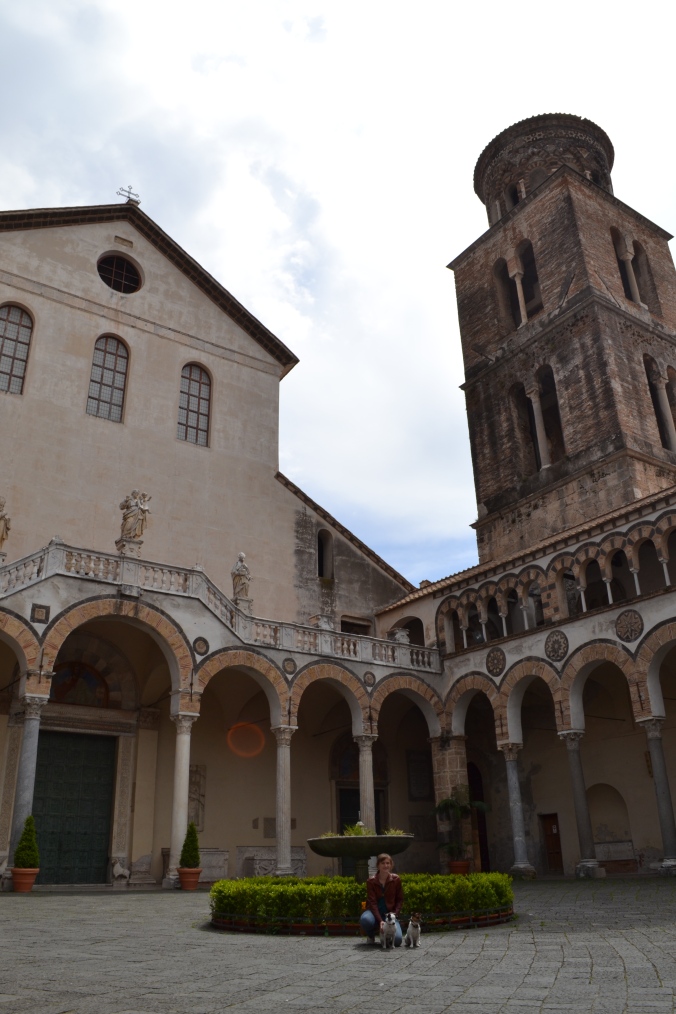
Outside of the Duomo of Salerno
I’d also like to take a moment to say just how incredibly dog friendly we’ve found this country to be. Sure strays are everywhere, but the doggies lucky enough to be doted on by Italians get the royal treatment. We’ve been in cafes and shops with them, seated in restaurants with them (they did tack on an extra cover charge for the dogs, but luckily they only counted them as one person’s worth of coperto), we even took them into a 1000 year old cathedral and no one batted an eye!
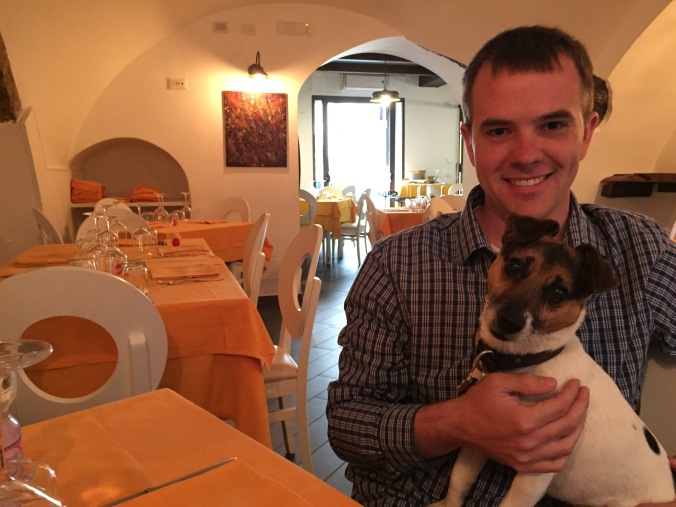
Roscoe offered to help finish our pizzas
Roscoe also wanted to remind us that “God” is just “dog” spelled backwards…
After lunch, we headed to the neighboring town of Vietri, famous for its ceramic creations and of course, its breathtaking views.
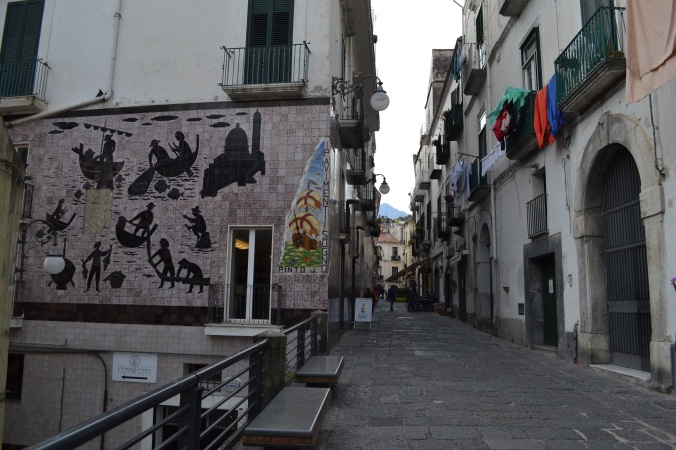
The following day, we invited some friends who are currently car-less to join us on an outing to Cantina di Solopaca. The Cantina is a giant farmer’s co-op that collects grapes and turns them into the most delicious wine you’ve ever tasted.
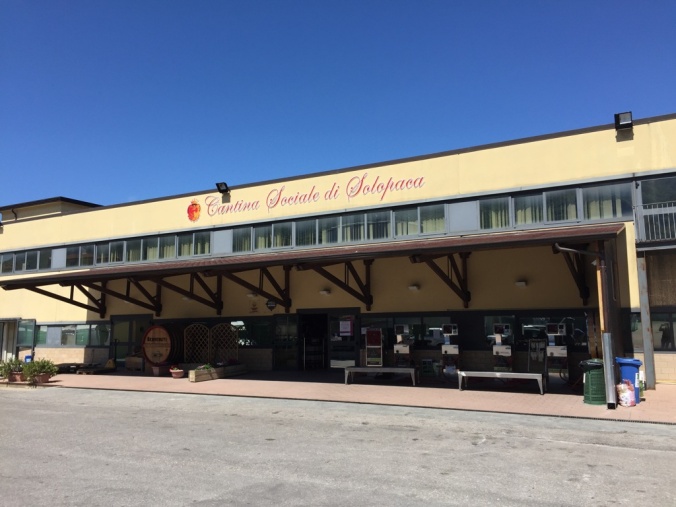
When you drive in, you see huge “silos” of wine in the parking lot. And you can buy your wine from gas pumps. Yes, you read that right. Gas pumps. It’s spectacular.
They were kind enough to offer us wine tastings of some of their bottled wine (and later their gas pump wine).
Quick lesson on wine drinking—there are four types of wine consumed here in Italy. The lowest tier and quality is called “vino da Tavola,” or table wine. The next one up is vino a indicazione geografica tipica, or IGT, which is wine produced in a specific region. After that is vino a denominazione di origine controllata (DOC), which are also produced in specific regions, but they must fit specific rules designed to preserve the traditional winemaking methods of those regions. Finally, there’s vino a denominazione di origine controllata e garantita (DOCG), which is like DOC wine but made under even more regulations.
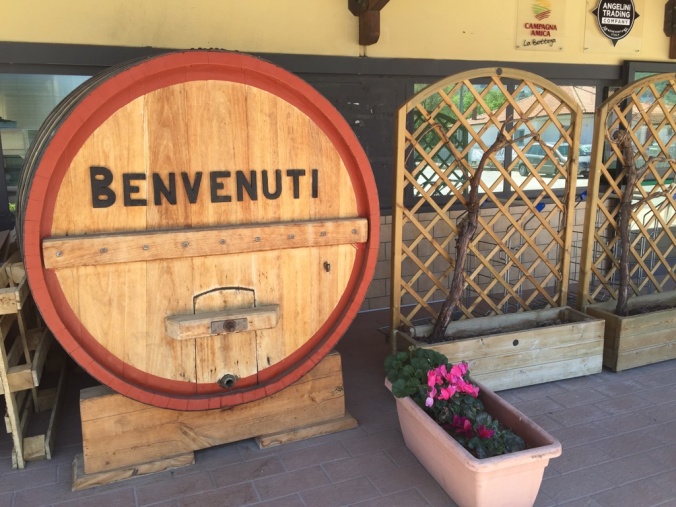
After over 30 liters of wine purchased (between three 5 gallon jugs and a dozen or so bottles, some for us and some for friends who couldn’t come), we patted ourselves on the back for a successful outing. We then almost got into a car accident because the navigator told the driver to go the wrong way on a one way road. The navigator might have been a little tipsy from all that wine tasting. But I’ll let you all figure out who was who.
All in all, it was a very rewarding weekend even if it was a little stressful. The more we let go of the way we “think” things should be and just accepted that “this is Italy,” the more we realize how wonderful and amazing this country is that the Navy tossed us into.
Sunset view from our rooftop
I look forward to many, many more travels in our time here. But for now, I have wine to drink!
